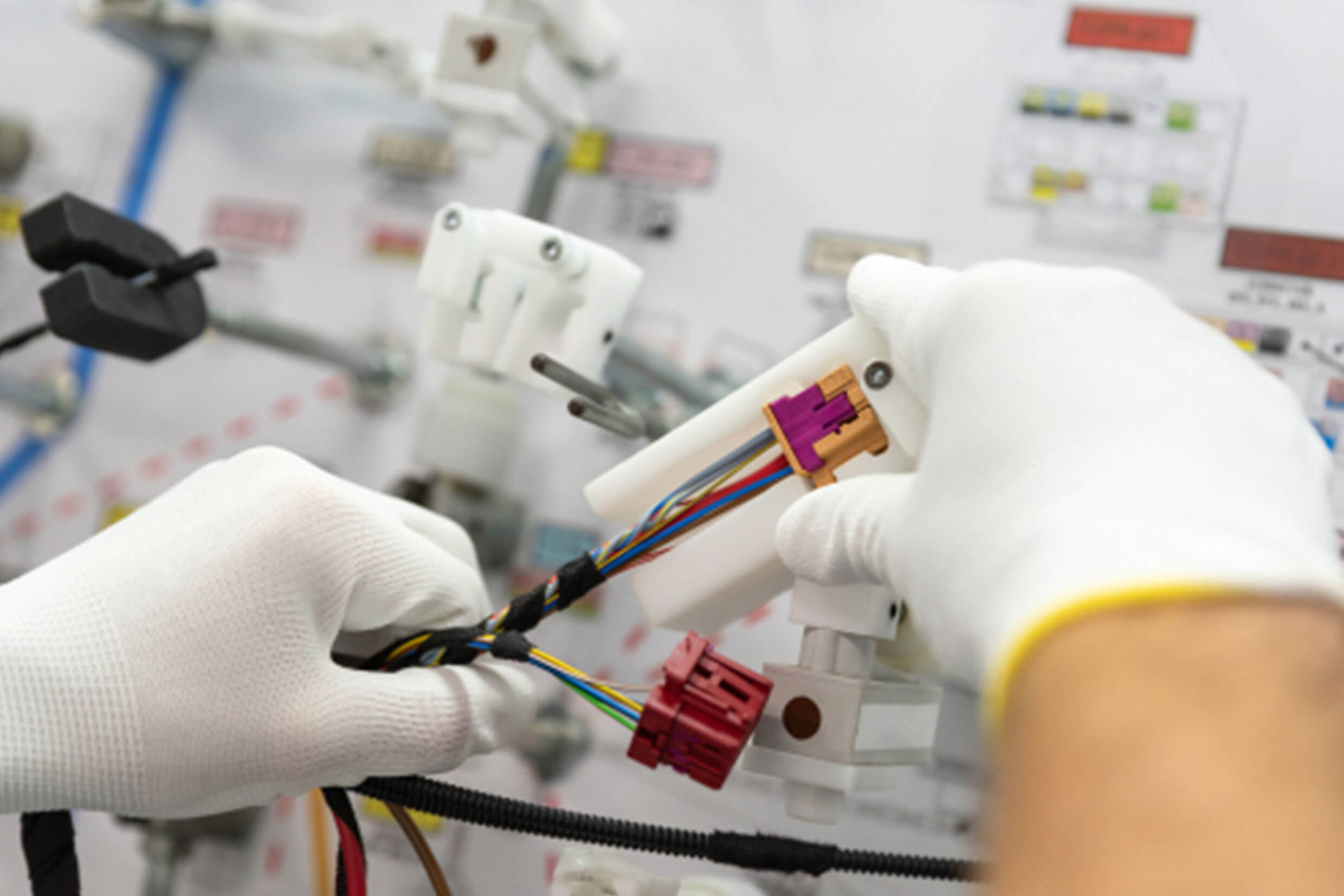Wire harnesses are used to keep many wires organised in a predetermined layout. Simple harnesses consist of several wires of the required length, bound together to save space and prevent damage during use. A more complex harness may have wires going in multiple directions and include many different termination components. Both simple and complex harnesses use materials such as heat shrink, cable ties, or electrical tape to keep wires bound together, making the assembly more robust.
The advantage of a wiring harness is that wires are kept neatly in place, faults can be easily traced, and the binding helps make the assembly more robust. On the other hand, wiring looms are more complex, consisting of many different types of wires, components, and terminations in a much more complex layout than wiring harnesses.
Wiring looms can be designed to save costs by reducing material wastage, and they enable space-saving designs by minimising the wiring footprint of a product.

